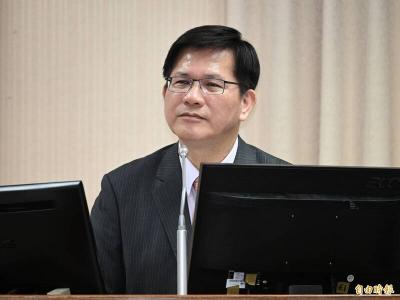Minister of National Defense Kao Hua-chu (高華柱) yesterday gave only vague answers when asked to comment on reports that the military’s top research institute had developed a 1,200km medium-range surface-to-surface missile capable of hitting central China.
“The military normally does not comment on programs that are still in development,” Kao said of a report in the Chinese-language Next Magazine, adding that some of the article’s content was not factual.
However, Kao added that “many things” were still in development and that there was much room for improvement, adding that the ministry would explain the matter to the public “when the time becomes opportune.”
The article said that following a number of breakthroughs in engine technology and miniaturization, the Chung Shan Institute of Science and Technology (CSIST), the nation’s top military research institute, had developed — and tested twice this year — a new surface-to-surface missile with a range of 1,200km that is capable of hitting Shanghai, about 700km from Taiwan, and parts of the South China Sea.
If the budgets are made available, mass production of between 50 and 60 missiles could begin in 2014 over a period of five years, with first deployments as early as 2015, the report said.
The article added that the military did not rule out developing a 2,000km-range missile, which would bring Beijing within reach.
Taiwan’s current land attack cruise missile (LACM) force employs the Hsiung Feng IIE (HF-2E), a 650km land and ship-based variant of the HF-2 anti-ship cruise missile. Mass production of the missile, which has not been seen publicly, is reported to have begun in 2010, along with that of the HF-3 supersonic anti-ship missile.
The ultra-secretive CSIST has long struggled with range and warhead miniaturization issues and has faced pressure from the US, which fears an arms race in the Taiwan Strait, not to seek further advances in LACMs.
Taiwan’s surface-to-surface missile capability is regarded as a purely counterforce means to attack enemy missile bases as well as command and control centers for China’s Second Artillery Corps. Although the HF-2E can target missile bases in Fujian Province, where the majority of China’s Dong Feng-11 (DF-11) short-range ballistic missiles are deployed, it comes short of the missile bases located deeper in Chinese territory, where medium-range DF-15 and DF-16s are located.
Although this view is not universal, a number of military experts say that a missile deterrent force would be a more cost-effective way for Taiwan to defend itself against China than the acquisition of expensive platforms such as new F-16C/Ds or large destroyers.

Several Chinese Nationalist Party (KMT) officials including Chairman Eric Chu (朱立倫) are to be summoned for questioning and then transferred to prosecutors for holding an illegal assembly in Taipei last night, the Taipei Police said today. Chu and two others hosted an illegal assembly and are to be requested to explain their actions, the Taipei City Police Department's Zhongzheng (中正) First Precinct said, referring to a protest held after Huang Lu Chin-ju (黃呂錦茹), KMT Taipei's chapter director, and several other KMT staffers were questioned for alleged signature forgery in recall petitions against Democratic Progressive Party (DPP) legislators. Taipei prosecutors had filed

Taiwan would welcome the return of Honduras as a diplomatic ally if its next president decides to make such a move, Minister of Foreign Affairs Lin Chia-lung (林佳龍) said yesterday. “Of course, we would welcome Honduras if they want to restore diplomatic ties with Taiwan after their elections,” Lin said at a meeting of the legislature’s Foreign Affairs and National Defense Committee, when asked to comment on statements made by two of the three Honduran presidential candidates during the presidential campaign in the Central American country. Taiwan is paying close attention to the region as a whole in the wake of a

NEW WORLD: Taiwan is pursuing innovative approaches to international relations through economics, trade and values-based diplomacy, the foreign minister said Taiwan would implement a “three-chain strategy” that promotes democratic values in response to US tariffs, Minister of Foreign Affairs Lin Chia-lung (林佳龍) said. Taiwan would aim to create a “global democratic value chain,” seek to capitalize on its position within the first island chain and promote a “non-red supply chain,” Lin was quoted as saying in the ministry’s written report to the Legislative Yuan submitted ahead of the legislature’s Foreign Affairs and National Defense Committee meeting slated for today. The Ministry would also uphold a spirit of mutual beneficial collaboration, maintaining close communication and consultations with Washington to show that Taiwan-US cooperation

Taiwan and the US have begun trade negotiations over tariffs imposed by US President Donald Trump earlier this month, Minister of Foreign Affairs Lin Chia-lung (林佳龍) said in an interview this morning before reporting to the Legislative Yuan’s Foreign Affairs and National Defense Committee. The Taipei Economic and Cultural Representative Office (TECRO), Taiwan’s de facto embassy in the US, has already established communication channels with the US Department of State and the US Trade Representative (USTR), and is engaging in intensive consultations, he said. Points of negotiation include tariffs, non-tariff trade barriers and issues related to investment, procurement and export controls, he